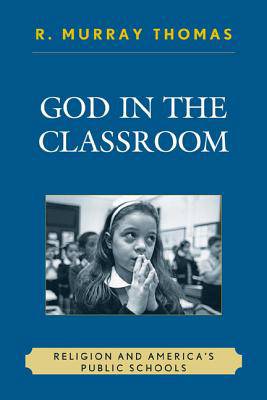
Bedankt voor het vertrouwen het afgelopen jaar! Om jou te bedanken bieden we GRATIS verzending (in België) aan op alles gedurende de hele maand januari.
- Afhalen na 1 uur in een winkel met voorraad
- In januari gratis thuislevering in België
- Ruim aanbod met 7 miljoen producten
Bedankt voor het vertrouwen het afgelopen jaar! Om jou te bedanken bieden we GRATIS verzending (in België) aan op alles gedurende de hele maand januari.
- Afhalen na 1 uur in een winkel met voorraad
- In januari gratis thuislevering in België
- Ruim aanbod met 7 miljoen producten
Zoeken
€ 76,45
+ 152 punten
Uitvoering
Omschrijving
Conflicts over the proper role of religion in schools-and particularly in public schools supported by tax monies-are frequently featured in news reports. For example, in the United States there currently are conflicts over the teaching of evolution, inserting the word God in the pledge of allegiance, conducting school holiday celebrations, posting the biblical Ten Commandments in schools, and praying at school functions. People who are interested in such controversies often-or, perhaps, usually-fail to understand the historical backgrounds to the conflicts and therefore do not recognize the very complex factors that affect why the controversies become so heated. To help readers gain a better understanding of such matters, this book focuses on the seven major types of conflicts that have become particularly confrontational during the first decade of the twenty-first century. The cases on which the chapters focus concern issues that currently are being hotly debated in America. Controversies are described in relation to their historical origins and the author shows how the history affects current understanding of the issues. Thomas does not take sides in the arguments; rather, he lays out the arguments, their historical and cultural contexts, and the groups that debate them and their goals. Anyone wishing to gain a better understanding of the controversies surrounding religion in American schools will be happy to find here not just a review of the issues, but a deeper consideration of the causes, consequences, and future of the debates and the role of religion in our public schools.
Specificaties
Betrokkenen
- Auteur(s):
- Uitgeverij:
Inhoud
- Aantal bladzijden:
- 296
- Taal:
- Engels
Eigenschappen
- Productcode (EAN):
- 9781578866991
- Verschijningsdatum:
- 21/08/2008
- Uitvoering:
- Paperback
- Formaat:
- Trade paperback (VS)
- Afmetingen:
- 147 mm x 224 mm
- Gewicht:
- 453 g

Alleen bij Standaard Boekhandel
+ 152 punten op je klantenkaart van Standaard Boekhandel
Beoordelingen
We publiceren alleen reviews die voldoen aan de voorwaarden voor reviews. Bekijk onze voorwaarden voor reviews.









